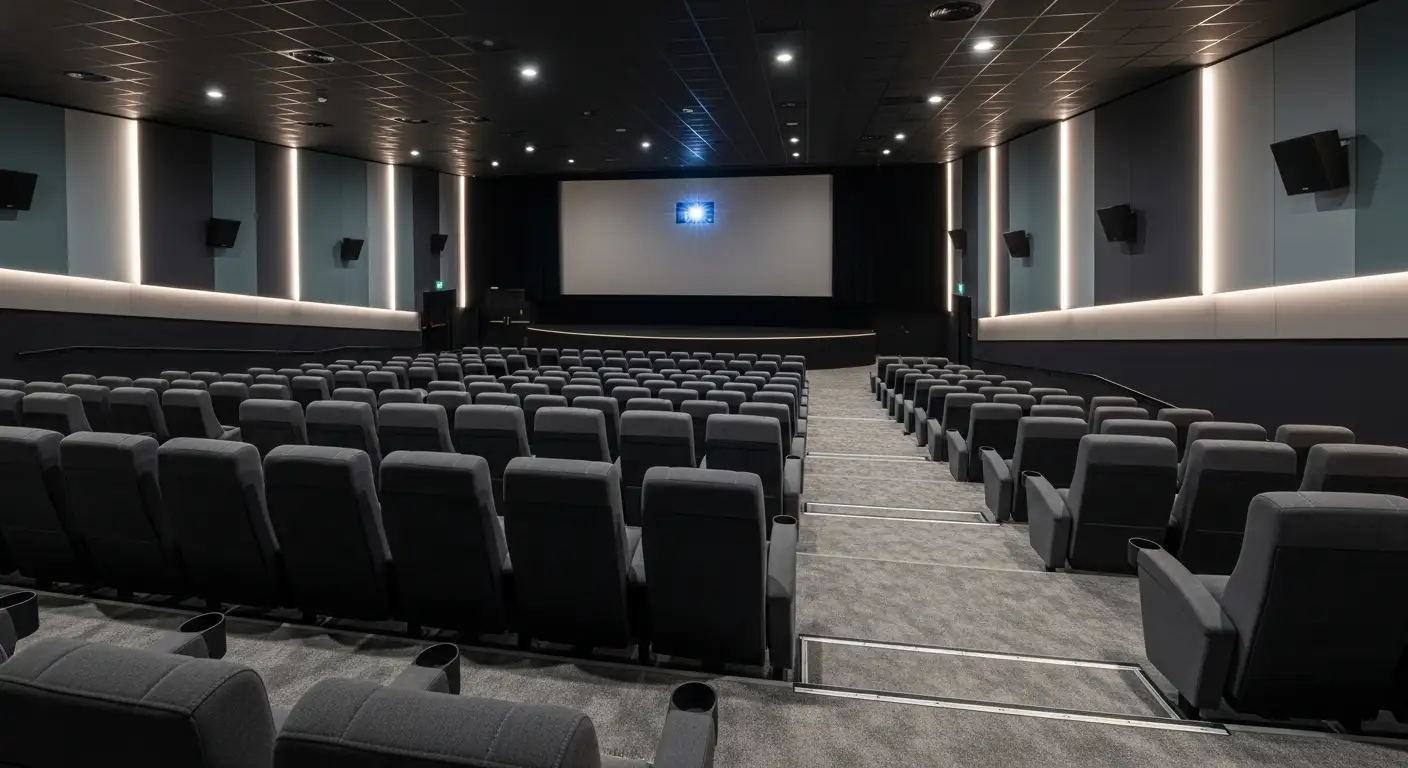Dyspraxia & Autism
Understanding the Intersection of Dyspraxia and Autism
Dyspraxia and autism are two neurodevelopmental conditions that, while distinct, often intersect and overlap in complex ways. Recognizing their unique features and shared characteristics is crucial for accurate diagnosis and effective support. This article explores the signs, symptoms, neurological underpinnings, co-occurrence, and therapeutic strategies for individuals affected by these conditions, emphasizing a comprehensive approach to understanding neurodiversity.
Overview of Autism and Dyspraxia: Definitions and Core Features

Autism as a lifelong neurodevelopmental condition affecting communication, social interaction, and sensory processing.
Autism Spectrum Disorder (ASD) is a broad term that covers a wide range of conditions characterized by differences in socialization, communication, and behavior. It is a lifelong condition that influences how individuals perceive and interact with the world around them. People with autism often experience sensory sensitivities, difficulties understanding social cues, and challenges with communication. Signs of autism include avoiding eye contact, repetitive behaviors, strong routines or interests, and difficulty expressing emotions or regulating feelings.
Autism impacts individuals of all intellectual abilities, from those who are highly functionally to those with intellectual disabilities. Moreover, autism is considered an umbrella term because its presentation varies greatly among individuals. Around 1 in 54 children is diagnosed with autism, with symptoms typically appearing in early childhood. Core features include social interaction difficulties, communication challenges, sensory sensitivities, and repetitive behaviors.
Dyspraxia as a neurological disorder impacting movement, coordination, and motor planning.
Dyspraxia, also known as Developmental Coordination Disorder (DCD), is a neurodevelopmental condition affecting movement and coordination. It involves difficulties in planning and executing physical movements, leading to clumsiness and problems with fine and gross motor skills. Common signs include poor balance, issues with organizing tasks, memory difficulties, problems with speech (verbal dyspraxia), and challenges in activities like handwriting, dressing, or sports.
Dyspraxia can be diagnosed in children over the age of five, with a prevalence rate of about 6-10% among children. It affects various aspects of functioning, including perception, motor control, memory, and information processing. People with dyspraxia may also experience difficulties in spatial awareness, timing, and emotional regulation. While primarily a motor disorder, dyspraxia can also influence social and cognitive skills.
Commonalities in developmental differences and neurodivergence.
Both autism and dyspraxia are developmental differences rooted in the neurological development of the brain, placing both within the scope of neurodivergence. They often share features such as sensory sensitivities, difficulties with social cues, and challenges in self-regulation. For example, avoidant eye contact, sensory sensitivities, and problems understanding social behaviors are common in both conditions.
Research indicates that many individuals with autism also show signs of dyspraxia. Studies suggest around 80% of children with autism exhibit symptoms of dyspraxia, and about 10% of those with dyspraxia show signs of autism. These overlaps suggest shared neurological underpinnings, although the core symptoms—social and behavioral in autism, motor and coordination in dyspraxia—are different.
Understanding these similarities helps in recognizing the importance of tailored support strategies. Interventions such as occupational therapy, speech therapy, and supportive activities can benefit both groups, especially when multiple neurodevelopmental conditions coexist.
Comparison Table of Autism and Dyspraxia
| Aspect | Autism Spectrum Disorder (ASD) | Dyspraxia (DCD) | Overlapping Features | Differentiating Factors |
|---|---|---|---|---|
| Core Impact | Social communication, behavior, sensory sensitivities | Movement, coordination, motor planning | Sensory sensitivities, social challenges, communication | Autism affects social/emotional skills; dyspraxia impacts motor skills |
| Diagnosis Age | Early childhood | Typically over age 5 | Both often identified in childhood | Autism diagnosis focuses on social and behavioral signs; dyspraxia on motor development |
| Prevalence | About 1 in 54 children | 6-10% in children | High comorbidity in practice | Most with autism may also have dyspraxia |
| Primary Symptoms | Social interaction difficulties, repetitive behaviors | Clumsiness, speech difficulties, routine dependence | Motor coordination issues | Autism core symptoms involve social/emotional/behavioral aspects |
| Treatment Strategies | Behavioral therapies, communication support | Occupational, physical, speech therapy | Supportive interventions for motor and communication | Tailored based on individual needs |
By understanding these conditions and their connections, healthcare professionals and caregivers can better support individuals, ensuring interventions address all facets of their development and daily functioning.
Neurobiological Mechanisms and Developmental Pathways

What are the underlying neural mechanisms involved in autism and dyspraxia?
Differences in brain regions responsible for movement, coordination, social cognition, and sensory processing underpin both autism spectrum disorder (ASD) and dyspraxia. In autism, neuroimaging studies have consistently shown underactivity in areas such as the fusiform face area, involved in social recognition, and the mirror neuron system, which is crucial for imitation and understanding others’ actions. These neural differences contribute to challenges in social interaction and communication.
Dyspraxia, or developmental coordination disorder (DCD), primarily involves atypical functioning in regions like the cerebellum—central to motor control—and the parietal lobes, which handle spatial awareness and perception. These neural discrepancies result in difficulties coordinating movements, maintaining balance, and perceiving the body's position in space. Both conditions involve deficits in sensory integration, which links sensory input to motor output, highlighting complex neural underpinnings.
How do neuroimaging findings differentiate between autism and dyspraxia?
Neuroimaging studies reveal that individuals with autism show reduced activity in brain areas involved in social cognition and motor observation, such as the temporal-parietal junction and premotor cortex. These deficits are associated with impaired social awareness, imitation, and praxis skills.
In dyspraxia, neuroimaging indicates different patterns of underactivity, especially in the cerebellum and parietal regions, aligning with motor clumsiness and coordination problems. These neural signatures suggest that though both conditions affect motor and social functioning, they involve distinct neural pathways.
Are developmental delays in motor skills and praxis linked to separate neurological pathways?
Yes, developmental delays in motor skills and praxis are often associated with specific neural pathways. Motor coordination issues involve the cerebellum and basal ganglia, which regulate movement timing and execution. Meanwhile, praxis—the ability to plan and perform skilled gestures—is linked to neural circuits involving the premotor cortex, parietal lobe, and supplementary motor area.
These pathways can be independently affected, leading to cases where children exhibit motor coordination challenges without praxis impairment, or vice versa. When both pathways are affected, the resulting overlap can influence social interactions and daily functioning.
What neurological factors explain why dyspraxia in children with autism cannot be fully attributed to basic motor skill deficits?
Research indicates that in children with autism, dyspraxia involves additional neurological factors beyond simple motor impairments. For instance, deficits in the praxis system may stem from atypical connectivity in neural networks that coordinate complex motor planning and social cognition.
Studies show that praxis performance correlates strongly with core autism features, such as social and communicative impairments, suggesting that neural abnormalities affecting imitation and skilled gestures extend beyond basic motor control.
Furthermore, neurodevelopmental investigations suggest that circuits involved in higher-order processing—like the mirror neuron system and frontal lobe structures—are disrupted in autism, contributing to dyspraxia as a marker of broader neurological abnormalities rather than isolated motor skill deficits.
| Aspect | Neural Regions Involved | Implications for Autism and Dyspraxia |
|---|---|---|
| Motor Coordination | Cerebellum, Basal Ganglia | Coordination challenges in both conditions |
| Social Cognition | Temporal-Parietal Junction, Mirror Neuron System | Difficulties in imitation and social understanding |
| Praxis / Skilled Gestures | Premotor Cortex, Parietal Lobes | Planning and executing complex movements or social actions |
| Sensory Integration | Sensory Cortex, Parietal Lobes | Processing of sensory stimuli crucial for coordinated responses |
Understanding these neural mechanisms and pathways informs targeted interventions, helping address specific deficits and support individuals more effectively in their developmental journey.
Prevalence, Diagnosis, and Impact of Co-occurrence

How common is the co-occurrence of dyspraxia and autism?
The co-occurrence of dyspraxia and autism is quite frequent. Research shows that around 80% of children diagnosed with autism also display signs of dyspraxia, indicating a significant overlap. Conversely, approximately 10% of individuals with dyspraxia exhibit traits associated with autism.
Both conditions share overlapping features such as difficulties in motor coordination, sensory sensitivities, and challenges with executive functions like planning and organization. These similarities can make diagnosis more complex when both conditions are present.
Understanding the high rate of co-occurrence helps ensure that assessments consider multiple neurodevelopmental aspects. Proper diagnosis is essential for designing effective intervention plans, which often include occupational therapy, speech therapy, and supportive educational strategies.
Most diagnoses involve comprehensive evaluation by professionals such as pediatricians, neurologists, occupational therapists, and psychologists. These assessments aim to discern the extent of motor, social, and communication difficulties. Early adoption of such evaluations usually leads to better support and developmental outcomes.
When and how is dyspraxia diagnosed?
Dyspraxia, also known as Developmental Coordination Disorder (DCD), is most frequently diagnosed in children over the age of 5. The prevalence among this age group is estimated to be between 6% and 10%. Diagnosis typically involves observing motor skill development and performance relative to typical age expectations.
Assessment methods include standardized motor skill tests and developmental history evaluations. Healthcare professionals look for signs like clumsiness, delays in motor milestones, difficulties with coordination, and problems with tasks that require fine motor skills such as handwriting.
How does autism impact children and what is its prevalence?
Autism spectrum disorder affects about 1 in 54 children, according to recent statistics. Children with autism often demonstrate social interaction and communication challenges, along with repetitive behaviors and restricted interests.
Many children with autism also show signs of dyspraxia, especially concerning motor skills and coordination. This overlaps can affect everyday activities like sports, handwriting, and social play.
The significance of high comorbidity
Studies reveal a high rate of co-occurrence: nearly 80% of children with autism meet criteria for dyspraxia, and about 10% of children with dyspraxia also present autistic traits. This overlap points to shared neurodevelopmental pathways or underlying neurological factors.
The presence of both conditions can further complicate diagnosis, as symptoms may mask or mimic each other. For example, social communication issues in autism may be confused with motor-related imitation difficulties in dyspraxia.
Recognizing comorbidity is crucial because it influences intervention strategies. For instance, therapies that address motor skills and sensory processing can benefit children with either or both conditions.
Early assessment and ongoing challenges
Most effective support starts with early diagnosis. Typically, assessments involve multidisciplinary teams including pediatricians, neurologists, and therapists, who examine motor skills, social behavior, and communication. Early intervention can significantly improve outcomes.
In conclusion, understanding the prevalence and overlap of dyspraxia and autism underscores the importance of detailed assessments. Identifying co-occurring neurodevelopmental differences ensures that interventions are tailored to individual needs, fostering better development, social integration, and quality of life.
Support, Interventions, and Final Considerations

Are there effective therapeutic strategies for managing dyspraxia and autism?
Yes, there are several therapeutic strategies that show promise in helping manage the challenges associated with dyspraxia and autism. Most notably, occupational therapy plays a central role in improving motor skills, coordination, and daily activity management. Occupational therapists work closely with individuals to break down complex movements into manageable steps, provide necessary adaptations, and encourage regular practice of motor tasks.
Additionally, therapies for autism, such as intensive interaction, imitation training, and expressive arts therapies, help promote social skills, emotional understanding, and behavioral regulation. These approaches are tailored to individual needs, aiming to foster independence and confidence.
While neither condition has a cure, targeted, activity-rich interventions help individuals develop skills that improve their quality of life. The focus is on supporting functional adaptation, fostering development, and reducing difficulties in everyday contexts.
What are current approaches for diagnosing and supporting individuals with dyspraxia and autism?
Diagnosis of autism spectrum disorder (ASD) involves a comprehensive assessment process conducted by specialists including pediatricians, neurologists, psychologists, and therapists. This assessment incorporates detailed behavioral observations, developmental history, caregiver reports, and standardized tools like DSM-5 criteria. The goal is to identify social communication issues, behavioral patterns, and motor skills deficits.
Supporting individuals with both conditions involves a multidisciplinary approach. Occupational and physical therapies are foundational in improving motor control and praxis. Speech therapy addresses language and communication difficulties, including issues with speech motor planning common in dyspraxia.
Early diagnosis is essential to allow for timely intervention, which can significantly improve developmental outcomes. Although there is no cure, personalized support plans combining therapy, educational adjustments, and environmental modifications help maximize the individual's potential.
Supporting social skills, emotional regulation, and daily functioning
Enhancing social skills and emotional regulation is key to improving overall well-being. Structured social skills training and emotional regulation strategies help individuals manage their reactions and interact more effectively. Social stories, visual supports, and role-playing are often used to teach appropriate social behaviors.
Support for daily functioning includes activities designed to improve organization, executive functioning, and routine management. Facilitating engagement in familiar routines and introducing adaptive tools can help individuals navigate daily challenges with greater independence.
The role of resources and advocacy organizations
Numerous organizations provide vital resources, education, and advocacy for individuals with dyspraxia and autism. Groups such as Dyspraxia/DCD Ireland, Dyspraxia/DCD America, and The National Autistic Society offer guidance, support networks, and information about therapies and services.
These organizations also work to raise awareness about neurodivergence, advocate for better services, and support families and educators. Engaging with these resources can empower families, facilitate access to specialized care, and promote inclusive environments.
| Aspect | Approach | Details |
|---|---|---|
| Therapeutic Strategies | Occupational, Speech, Behavioral | Focused on skill development, social skills, and emotional regulation |
| Diagnosis Methods | Behavioral assessments, Specialist evaluations | Using DSM-5 criteria, checklists, developmental history |
| Supporting Daily Life | Routines, adaptive tools, skills training | Promoting independence and functional living |
| Resources & Support | Advocacy organizations, support groups | Providing guidance, raising awareness, and community support |
Addressing neurodevelopmental differences like autism and dyspraxia requires a comprehensive, compassionate approach. With early diagnosis and personalized intervention, individuals can better navigate their challenges and thrive.
Fostering Inclusion and Understanding in Neurodiverse Communities
Recognizing the overlaps and distinctions between dyspraxia and autism empowers caregivers, educators, and healthcare professionals to develop tailored, effective support systems. Through early diagnosis, comprehensive assessment, and individualized interventions, individuals can achieve enhanced communication, motor skills, and social integration. Promoting awareness and understanding fosters inclusive environments that appreciate neurodiversity, ensuring every individual has the opportunity to reach their full potential in a society that values diverse ways of thinking, moving, and connecting.
References
- Autism & Dyspraxia: Differences & Overlaps - Exceptional Individuals
- Possible Links Between Dyspraxia and Autism
- Dyspraxia in autism: association with motor, social, and ... - PubMed
- Related conditions - a guide for all audiences
- Imitation and dyspraxia in autism: Clinical and therapeutic implications
- Other conditions that affect autistic people - NHS
- The relationship between Autism and ADHD, Dyspraxia and Dyslexia
Other articles
Recent articles

Cognitive Behavioral Therapy Adaptations For Autism

Best Practices For Autism-Friendly Movie Screenings

Autism And Eating Challenges Beyond Picky Eating

Best Practices For Autism-Friendly Public Transport Design

Best Ways To Foster Collaboration Between Parents And Schools For Autism Support

Supporting Autistic Children During Transitions Between Activities

The Role Of Teachers In Fostering Autism Peer Acceptance

Using Art Therapy To Support Children With Autism

Autism And Strategies For Addressing Sensory Defensiveness

Autism And The Benefits Of Structured Leisure Activities

How To Support Autistic Students During Exam Season

Autism And Goal Setting For Personal Growth

How To Use Gamification In Autism Learning Programs

How Schools Can Reduce Bullying Of Autistic Students

Early Intervention Strategies For Autism Spectrum Disorder

The Role Of Therapists In Autism Life Skills Coaching

How To Support Autistic Individuals In Crisis Situations

Autism And Self-Care Routines For Stress Management

Understanding Echolalia And Its Role In Autism Communication

Autism And Fine Arts Education Benefits

The Impact Of Multisensory Learning On Autism Education

How Family Counseling Supports Autism Household Dynamics

Best Practices For Inclusive Playgrounds For Autism

Best Practices For Autism-Friendly Shopping Centers

How Autism Affects Fine Motor Skill Development

Best Ways To Introduce Sensory Activities Into Daily Routines

How Sports Teams Can Be Inclusive Of Autistic Players

Autism And Strategies For Building Workplace Resilience

Autism And The Impact Of Hormonal Changes During Puberty

How To Support Autistic Students In Foreign Language Classes

Best Ways To Teach Money Skills To Teens With Autism

Supporting Siblings Of Children With Autism

Autism And Co-Occurring Gastrointestinal Disorders

The Role Of Art Projects In Autism Sensory Integration

How Schools Can Incorporate Sensory Break Spaces

Best Practices For Autism Sensory Regulation At School

Autism And Strategies For Teaching Organizational Skills

Understanding The Relationship Between Autism And Anxiety Disorders

Autism And Life Planning For Long-Term Care

Exploring Visual Supports In Autism Education

Ways To Encourage Social Interaction In Children With Autism

The Connection Between Autism And Dyscalculia

The Role Of Occupational Therapy In Transition Planning For Autism

The Role Of Physical Therapists In Autism Motor Skills Support

How To Teach Decision-Making Skills To Autistic Young Adults

The Connection Between Autism And Epilepsy

Best Practices For Transitioning Autistic Children Into New Schools

Autism And Time Management Challenges In Adulthood

The Role Of Visual Arts In Autism Communication Development

How To Address Tactile Defensiveness In Autism

Best Practices For Telehealth Autism Therapy

How To Help Autistic Children Develop Friendship Skills

How Schools Can Support Autistic Students In Career Prep

Best Strategies For Autism-Friendly Event Planning

Understanding Noncontingent Reinforcement In Autism Behavior Plans

How Drama Therapy Benefits Autistic Individuals

Best Practices For Autism-Friendly Fitness And Recreation Centers

Best Ways To Promote Healthy Social Media Use For Autistic Teens

How To Help Autistic Children Cope With Public Speaking

Autism And Strategies For Managing Unexpected Changes

Best Podcasts About Autism For Parents And Educators

Autism And The Impact Of Seasonal Changes On Behavior

The Role Of Diet In Managing Co-Occurring Conditions With Autism

Sleep Challenges In Autism And Practical Solutions

Best Ways To Build Daily Routines For Autistic Children

Best Practices For Supporting Autistic Entrepreneurs

Autism And Strategies For Navigating Large Social Gatherings

Adaptive Sports And Recreational Activities For People With Autism

Autism And The Benefits Of Story-Based Learning Activities

Understanding The Role Of Play In Autism Development

Autism And The Impact Of Environmental Noise On Learning

How To Create Autism-Friendly Community Spaces

Autism And Chronic Health Conditions: What To Know

The Role Of Care Managers In Autism Life Planning

How To Teach Social Boundaries To Autistic Children

How Autistic Individuals Experience Empathy Differently

How To Support Autistic Employees In Remote Work Settings

Autism And The Relationship Between Motor Skills And Learning

How To Create Community Resource Guides For Autism Families

How To Teach Daily Living Skills To Autistic Teens

Autism And The Impact Of Mind-Body Practices On Stress Reduction

Autism And The Benefits Of Outdoor Group Activities

How To Create Autism-Friendly Sensory Paths In Schools

Best Practices For Autism-Friendly Park And Recreation Areas

Autism And Strategies For Reducing School Refusal

Supporting Autistic Individuals In Public Speaking

The Role Of Diet In Managing Autism Symptoms

The Benefits Of Gardening Clubs For Autism Social Development

How To Prepare Autistic Children For Dental Visits

Autism And Employment: Career Paths That Work

Best Practices For Autism-Friendly Hotels And Lodging

The Impact Of Screen Time On Autism Development

Autism Screening Tools For Early Childhood

The Role Of Physical Exercise In Autism Therapy

Best Strategies For Supporting Autistic College Students

The Role Of Technology In Autism Early Detection

Sensory-Friendly Classroom Design Ideas For Autistic Students

The Role Of Speech Therapy In Building Social Communication Skills

Best Strategies For Handling Autistic Burnout In Adults

Autism And The Importance Of Predictability In Routine
We’re All About You, Your Family, and Your Child

